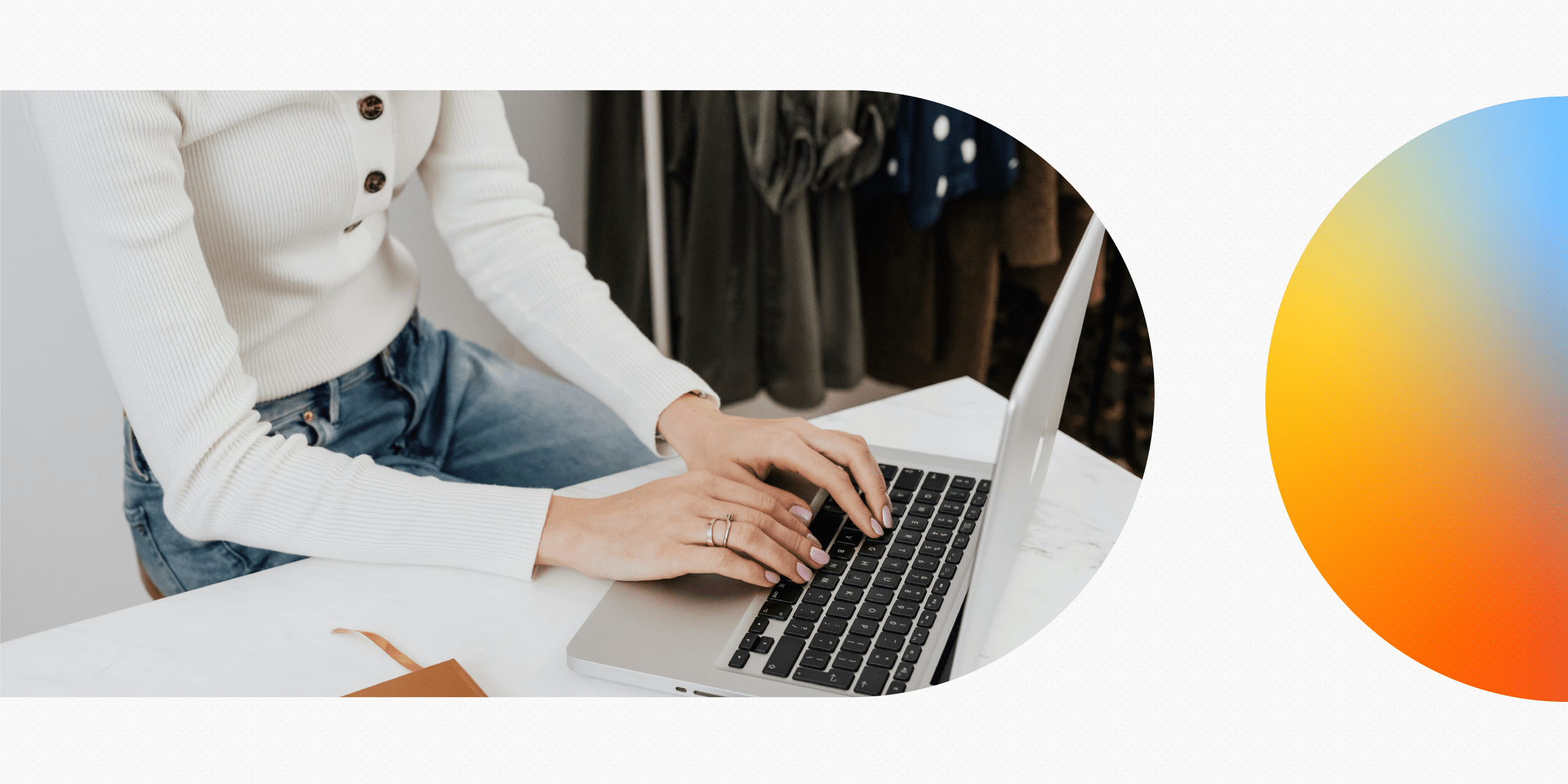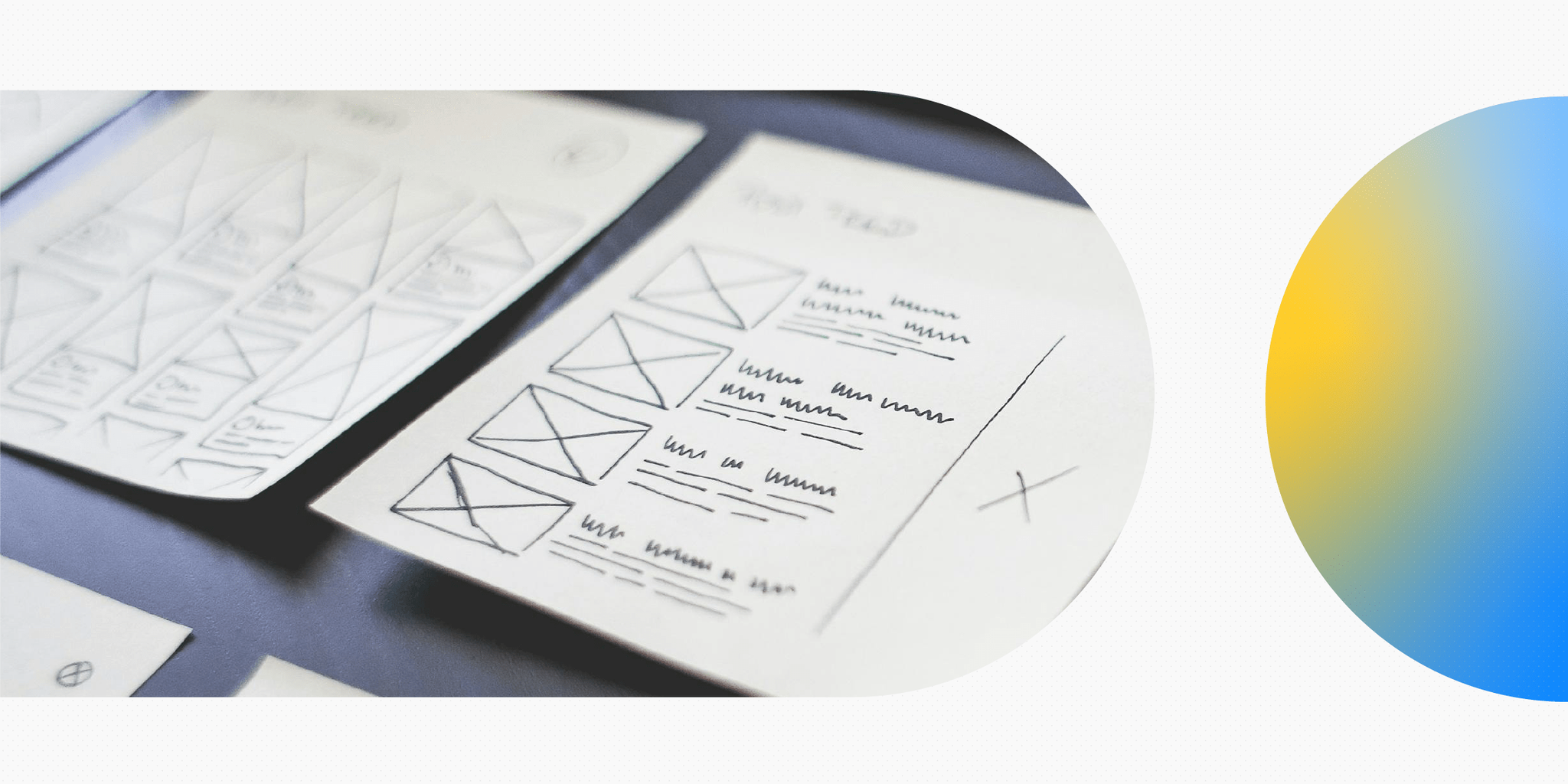Becoming a freelance UX designer can bring you a lot of freedom. You’ll get to make your own schedule and choose which projects you work on. That’s really exciting but it can come with its own set of challenges, which may stall your career.
As a freelance UX designer, you are not only a designer but a small business owner too. That means getting the clients and deciding how much your services should cost. That also means being the marketing team, the accountant, CEO and your own personal HR department.
We’ve rounded up 8 pieces of sound advice for new freelance UX designers so that you can start your career off on the right foot and find long-term success. Read on to learn how to manage your time, set your rates and more.
-
Start small
When you’re first starting out, taking on freelance UX design projects can feel intimidating. A great way to get started is by volunteering or doing work for newer small businesses, charities, non-profits or even for your friends. You can do less overwhelming projects that you feel comfortable with technically and get in-depth client relationship experience in these settings. You can charge a reduced rate while you get your footing and then turn these projects into case studies for your portfolio.
-
Find a niche
To grow your client roster in your UX design career, it helps to have a place to start. That means defining your niche and the ideal client for you within that niche. A niche can be as broad as an industry, type of client or types of projects you prefer to work on.
By narrowing down the projects you’re pitching for, you can start to specialise and position yourself as an expert. Positioning yourself as an expert gives you a higher chance of actually landing the projects you pitch.
When you’re first starting out, you’ll probably work on projects in multiple different niches and that’s okay. While you work through those first few months on a variety of projects, start noticing what feels good to you. What are you excited to learn more about? Where do you already have expertise that you can leverage? That’s where you’ll find your niche. -
Format your portfolio as case studies
Formatting your portfolio into case studies is beneficial for a few reasons. Firstly, clients can see your process, problem solving skills and technical skills. It also shows them what it might be like to work with you. Often, clients won’t fully understand what you did or why if you’re only sharing final projects. Using a case study format gives you a chance to explain your designs – positioning you as an expert who understands your clients’ needs.
What to include in your case study:- Title
- Project overview
- Problem statement
- User and audience profile
- Your roles and responsibilities
- Scope of the project and constraints you worked with
- Process – why you did what you did
- Outcomes and lessons learned
-
How to set your rates as a freelance UX designer
Freelance rates are very personal and individual. We all have an internal dialogue about money and how it relates to our own worth. It’s important to start honing this inner narrative right off the bat as a freelancer. You need to be practical with your prices. Do not price intuitively.
How to determine your hourly rate:
- Determine the salary you need to make based on your expenses.
- Calculate how many hours per year you’d like to work. Subtract at least 5 hours per week from that number to account for administrative work you’ll need to do as a business owner. We also recommend subtracting at least two weeks from the year to make sure you can take time off and sick days.
- Divide your necessary annual salary by how many hours per year you’d like to work to determine your minimum hourly rate.
As you grow, you’ll be able to charge more because you’ll pick up technical skills, strategic understanding and client relationship expertise. Most freelance UX designers begin at a reasonable baseline rate. Then, they raise this rate by 25 – 50% for every five years that they’ve worked.
Here’s an example of this. Understand that these are just recommendations. Your own experience, niche and specific projects may allow you to charge more.
Example rates:
- Years 1–5: $50/hr
- Years 5–10: $75/hr
- Years 11+: $100+/hr
We wrote this comparative guide on salaries for UX designers across the world at all different levels. This might be useful when it comes to naming your price.
-
How to manage your time as a freelance UX designer
There are three steps to a successful freelance UX design pitch. A pitch is essentially you noticing that the client has a problem and presenting a solution to that problem. It’s a way to show your work and your thought process. It’s also a way to get to know a client better and learn whether the project is right for you.
For most freelance UX designers, time is money. As such, you need to get disciplined about managing your time. Here are five ways to get on top of your time:
Track your time
Use a time tracker – like Harvest or Toggl Track – and analyse your results. This will allow you to provide accurate estimates and schedule yourself realistically.
Keep it under 120 hours per month
If you want to work 40 hours or less per week, don’t schedule more than 120 hours of work per month. You will definitely need to spend at least 10 hours per week managing your freelance business and completing additional tasks you didn’t budget time for.Make a schedule
You have a decent amount of freedom when it comes to scheduling as a freelancer but as your own boss, you need to make sure you’re managing it properly. Having a routine will not only help you stay grounded, it’ll also save your brain from decision fatigue. Have some kind of regular work schedule so that you can plan ahead and make sure you get your work done. It doesn’t have to be nine-to-five and it doesn’t have to stay the same forever. But you’ll likely need some kind of structure to succeed.Create systems
As a freelance UX designer, you can save tons of time by setting up systems. That can be a client relationship management system, an onboarding process for new clients, client acquisition processes that you can iterate or templates for common projects.Learn to say no
Along with scheduling yourself for 120 hours or less per month, you’ll need to learn to say no. You can’t do it all. Prioritise the types of projects or clients that you really want to work with and say no to anything that isn’t that. Additionally, don’t work outside of the schedule you set for yourself. Consistently saying yes to everything that comes your way and working outside of your schedule will lead to burnout.
Take a look at this guide for some of the best UX documentation tools. These can also be used to help you manage your time and projects. -
How to pitch as a UX designer
There are three steps to a successful freelance UX design pitch. A pitch is essentially you noticing that the client has a problem and presenting a solution to that problem. It’s a way to show your work and your thought process. It’s also a way to get to know a client better and learn whether the project is right for you.
i. Find the purpose of the project
Do your research before you actually pitch the project. First, research the client and what they’re already doing. Then, you can create a prospective client questionnaire to find out what the clients’ goals are and technical specs.ii. Innovate and present
Based on your research, consider how you can help them. Then, put together a detailed proposal for the project. Your proposal should include:- An introduction of the project and your services
- An outline of the work you’ll do
- A breakdown of your process
- How much the project will cost the client
- The cost of anything that exceeds the original quote
- A list of what you need from the client
- A pricing breakdown based on phases with a clear deposit amount
- How the client can pay their invoices and receive your final work
- Your contact information
- A space for the client to sign the document and approve the proposal
iii. Establish a connection
Pitches are more likely to be accepted when you’ve pitched someone that you’ve been networking with. Before the project, you also network with them via social media. You can establish a stronger connection with a potential client by scheduling a video call with them to go over the project and present your proposal. Communicate with them clearly throughout the project. Treat them as someone who is a valuable source of information! Clients who feel respected will treat you with respect in return.
If you need more advice on branching out into the freelance world, read this complete guide to becoming a freelance UX designer. -
Keep your eyes peeled for red flags
It is highly unlikely that you’ll get away with not having any bad clients as a freelancer. It’s a part of the process. As you gain experience, you’ll learn what to look out for to avoid bad clients. What makes a bad freelance UX design client?
Clients who…
- Refuse to pay a deposit
- Don’t want to fill out or provide a creative brief
- Have unreasonable expectations (eg: they can call you at 11pm at night)
- Don’t actually know what they want
- Change direction more than once
- Push you to work outside the scope of your contract
- Don’t give you creative freedom
- Micromanage the design
- Complain about a designer or developer they’ve worked with in the past…are generally going to be bad clients.
-
Know when to stop working for free
When you are starting out – or still studying – working for free is a great way to gain experience and build up your portfolio. However, there comes a point in your career when you must be paid for your work. Set a timeline in your career for when you should be paid. This timeline can be marked by years of experience or milestones reached.If you continue to work for free, it sets a low precedent for other freelance UX designers and it might allow clients to pay unreasonably low rates.This also means that you shouldn’t create actual design mockups in your proposal or as a test before you receive any payment. You can always refer to existing work in your portfolio for an example.




